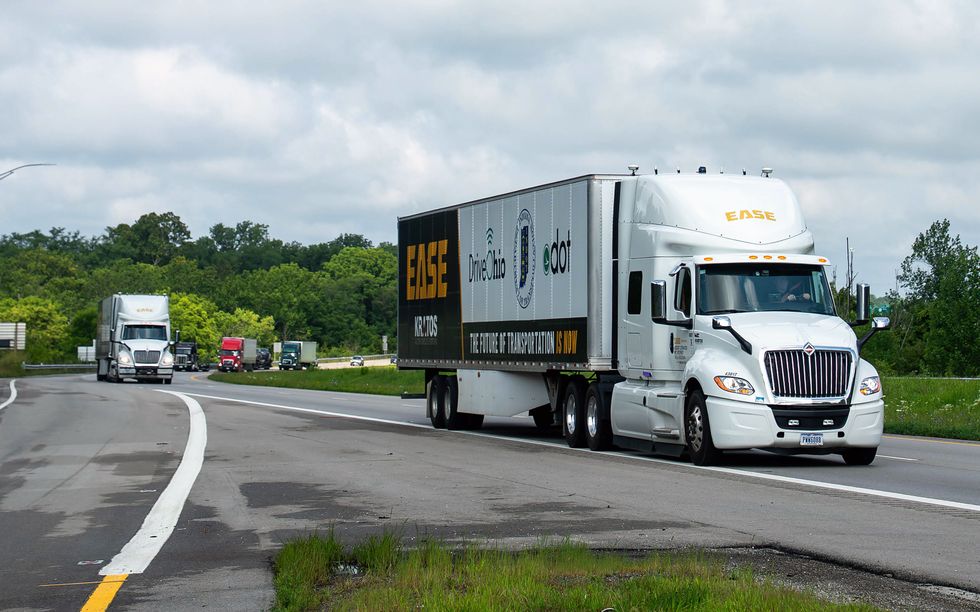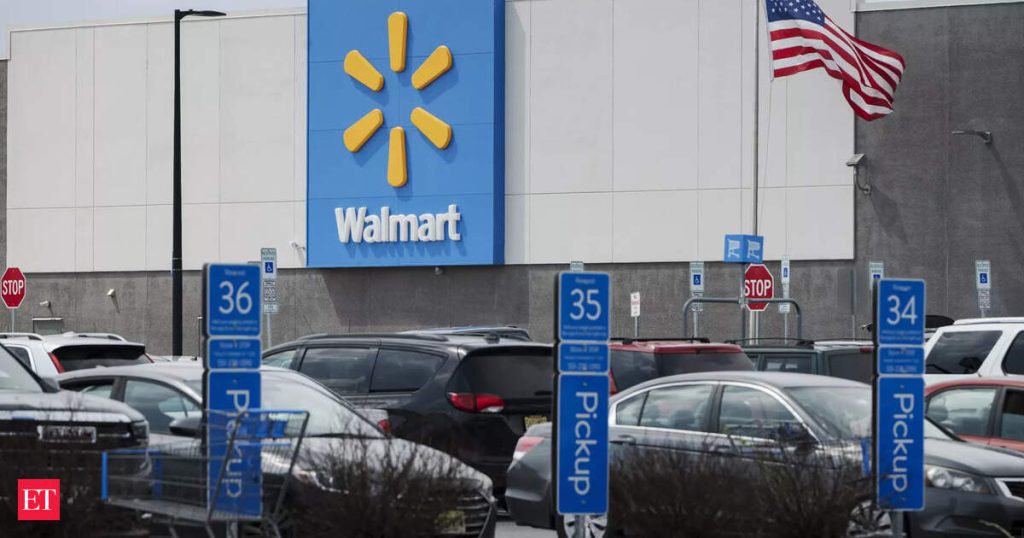Now Reading: One Driver, Two Trucks: Is This the Future of Freight?
-
01
One Driver, Two Trucks: Is This the Future of Freight?
One Driver, Two Trucks: Is This the Future of Freight?

The pair of semi trucks cruising down Interstate 70 between Columbus, Ohio, and Indianapolis may seem unremarkable at first glance. But these rigs are part of a groundbreaking pilot project that could reshape America’s freight industry.
Launched in April through a joint initiative between the Ohio and Indiana Departments of Transportation (DOTs), the project tests semi-autonomous “platooning” technology, in which a lead truck operated by a human driver is linked to a follower truck via encrypted, military-grade communications. Signals from the lead truck control the follower truck’s steering, acceleration, and braking; in essence, the follower truck mimics what the lead truck does. With one driver effectively operating two trucks, the system extends fleet capacity without doubling headcount. Along with addressing the nation’s persistent truck driver shortage, It can also increase safety and improve fuel efficiency.
Ohio Department of Transportation
“This is about reimagining the future of transportation in our region,” says Nick Hegemier, managing director for infrastructure and technology at DriveOhio, a smart mobility initiative within the Ohio DOT. “By collaborating across state lines and sectors, we’re paving the way for smarter, safer, and more efficient freight movement.”
What is truck platooning?
For the pilot project, Kratos Defense, a San Diego–based defense contractor known for its autonomous military systems, adapted its battlefield vehicle-following technology for civilian use. The trucks are operated by EASE Logistics, in Dublin, Ohio.
“We’re not replacing drivers—we’re extending their reach.”
–Maynard Factor, Kratos Defense
Kratos’s system can be retrofitted to existing trucks and is designed to be robust in high-interference environments. It uses dual-channel, frequency-hopping communications and 256-bit AES encryption. The trucks can switch between two radio frequencies—915 megahertz and 2.4 gigahertz—to maintain a secure connection even as they roll through electronic tollbooths, which mostly use 915 MHz.
“There’s no Wi-Fi, no cellular, no Bluetooth,” says Maynard Factor, vice president of business development at Kratos. “Just a direct vehicle-to-vehicle link with intelligent fallback if one frequency becomes unreliable.”
The tight coordination between the trucks improves safety by helping to dampen the stop-and-go shockwaves that can lead to accidents. The follower truck also uses up to 10 percent less fuel by staying in the low-pressure wake of the lead truck, while the lead truck’s fuel economy improves by a few percent because it experiences less turbulence at its rear, according to researchers.
In the one-year Ohio-Indiana pilot, the follower truck includes a human backup driver. Factor says that the system can support backup drivers who don’t have commercial driver’s licenses; the eventual goal is to have no driver in the second vehicle. Alternatively, if both drivers are qualified, they can switch places when the lead driver gets tired.
“At the end of the day, we’re not replacing drivers—we’re extending their reach,” Factor says. “We’re building a future where technology supports the workforce instead of sidelining it.”
Pros and cons of truck platooning
If platooning becomes widespread, trucking companies could save a lot of money. A 2021 U.S. Department of Energy study on truck platooning found that nationwide spontaneous platooning—where trucks from different locations encounter each other on the road and wirelessly pair up while they’re headed in the same direction—could save nearly US $1 billion a year in fuel, says Mohamadhossein Noruzoliaee, an assistant professor of civil engineering at the University of Texas Rio Grande Valley and coauthor of the study. “It also increases road capacity by about 8 percent, potentially avoiding $4.8 billion in infrastructure expansion costs,” Noruzoliaee says. And platooning trucks’ ability to maintain short following distances allows more trucks to travel on a given stretch of roadway.
In the Ohio–Indiana pilot project, the second truck can be as close as 30 meters behind the lead truck—much closer than a human driver could safely manage. That’s because the follower truck can react almost instantaneously if the lead truck brakes suddenly. On closed tracks and in wind tunnel tests, trucks have been spaced as little as 4 meters apart. But on public roads, state laws require much larger distances.
RELATED: One Driver Steers Two Trucks With Peloton’s Autonomous Follow System
Noruzoliaee warns a proliferation of closely spaced platooned trucks could accelerate road wear. “This could justify restricting platooning on certain roads—like local streets or bridges—where pavement wasn’t designed for these load patterns,” he says. “State DOTs should analyze these trade-offs when planning for platooning at scale.”
And despite the system’s sophistication, Noruzoliaee cautions that autonomy in the follower truck remains a work in progress. “This technology can reduce cognitive load and fatigue for the follower,” he says, but the human driver in the follower truck should remain alert. Urban environments pose particular challenges. Passenger cars and traffic signals can break up truck platoons, forcing the truck pairs to reform. And that in turn takes time and reduces fuel savings.
Still, the retrofit-ready nature of the Kratos system should make it appealing to fleet operators. New capabilities—such as allowing the lead and follower trucks to switch positions—could make platooning even more flexible and commercially viable.
As testing continues along the I-70 corridor, the familiar roar of these advanced trucks’ engines could signal a practical, incremental path to freight automation—especially when compared with the more ambitious vision of fully autonomous trucks, like those recently launched by Pittsburgh-based Aurora Innovation.
Aurora’s self-driving trucks, which began shuttling between Dallas and Houston in April, rely on AI, sensor fusion, and real-time decision-making to navigate highways without human input. But despite rapid progress, fully autonomous trucks still face significant hurdles—regulatory, technical, and public trust—that will likely delay broad adoption for years. During the Aurora truck’s maiden voyage on public roadways, CEO Chris Urmson shared his excitement about riding in the backseat. However, just weeks later—and at a partner’s insistence—Aurora decided that the onboard human “observer” will sit in the driver’s seat instead.
While we wait for the driverless truck future, semi-autonomous truck platooning may offer a more affordable, lower-risk, and near-term option. Because the Kratos system can be retrofitted to existing trucks, a freight operator can introduce autonomy into the fleet without having to invest in brand-new trucks.
“Platooning is the next step in building a resilient, modern freight network—one that’s safer, smarter, and more efficient,” says Factor.























